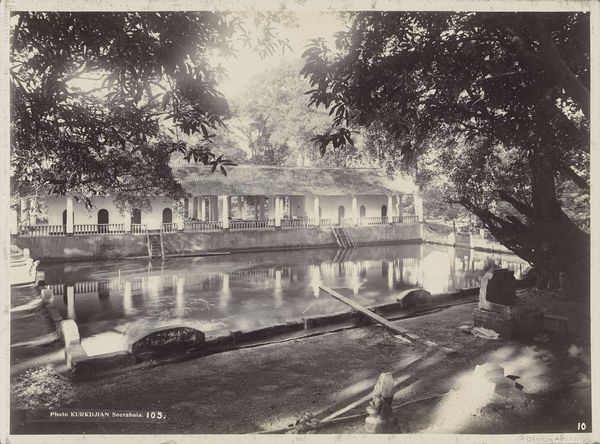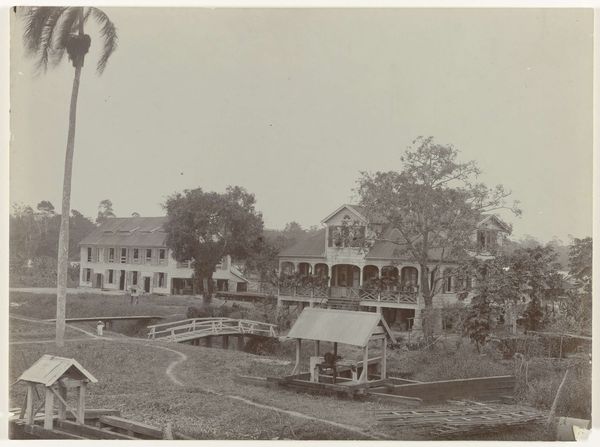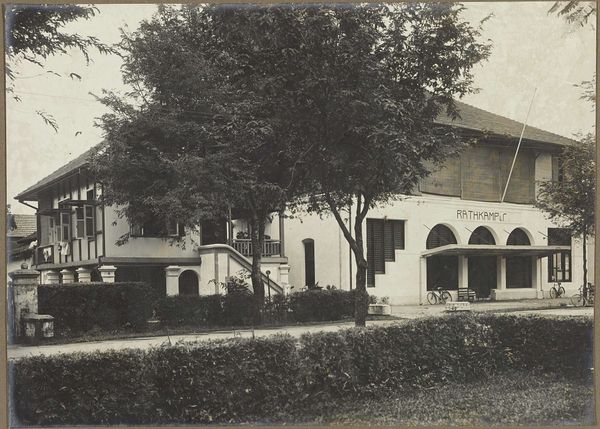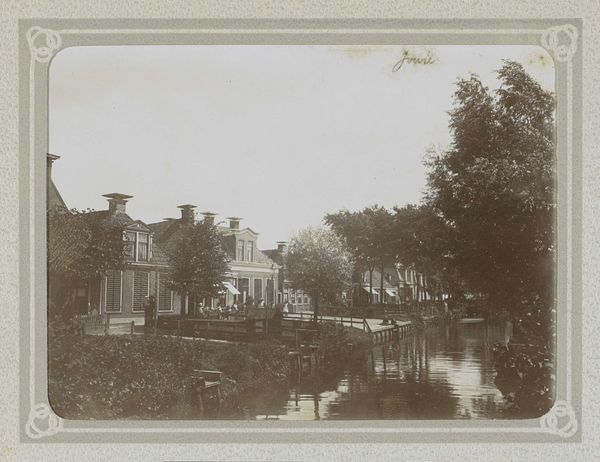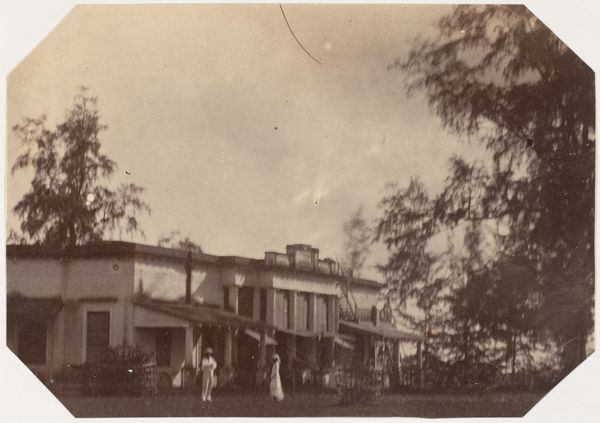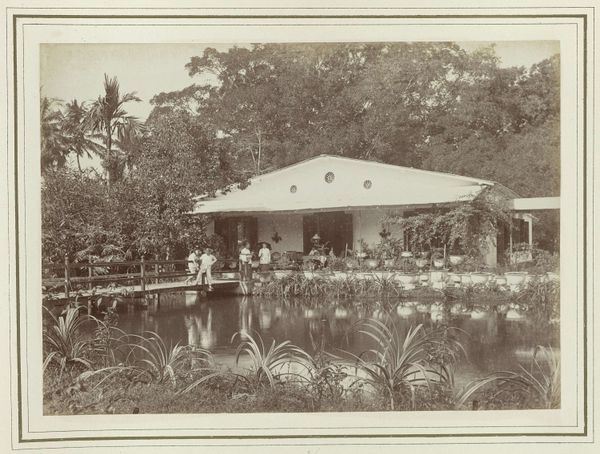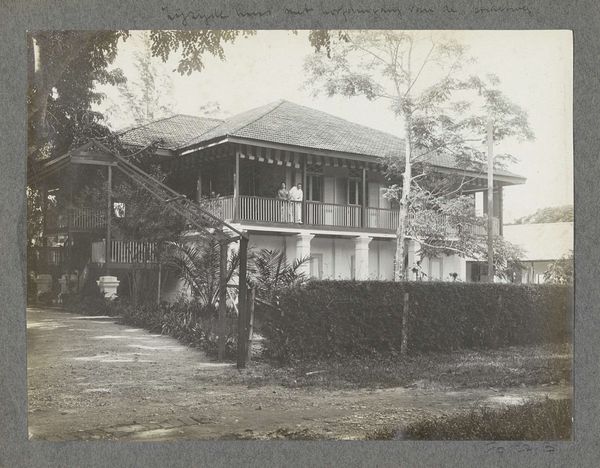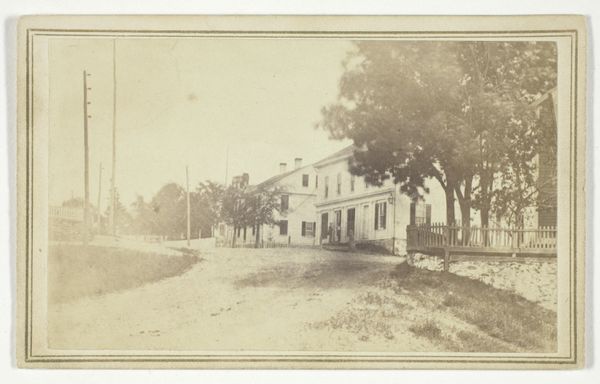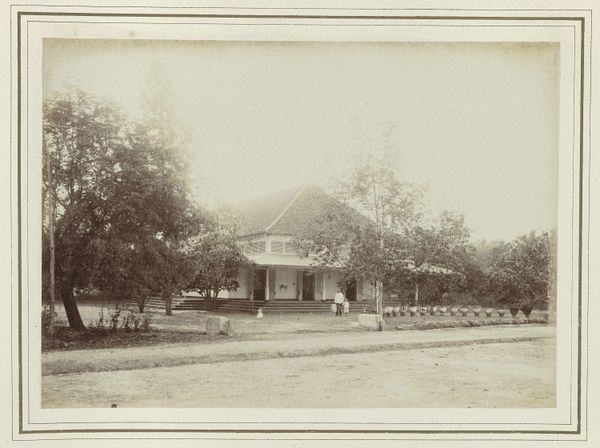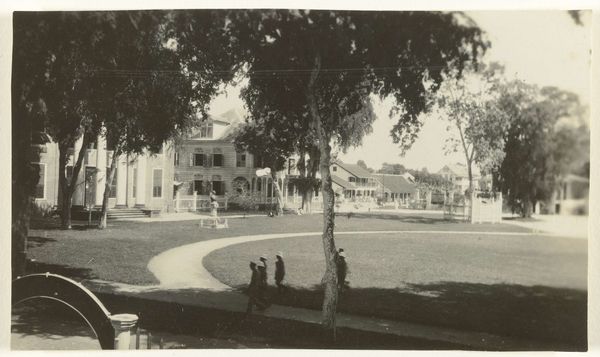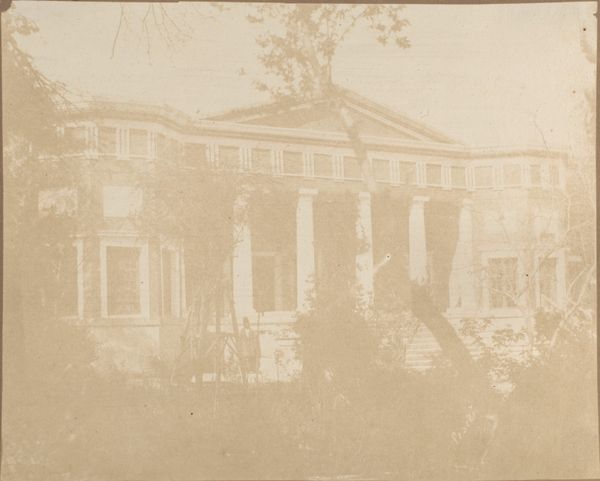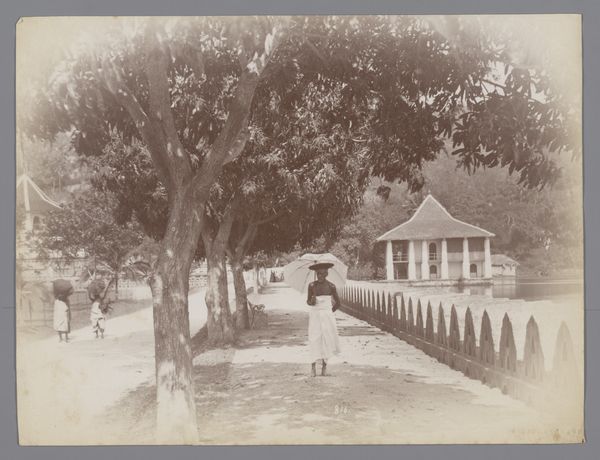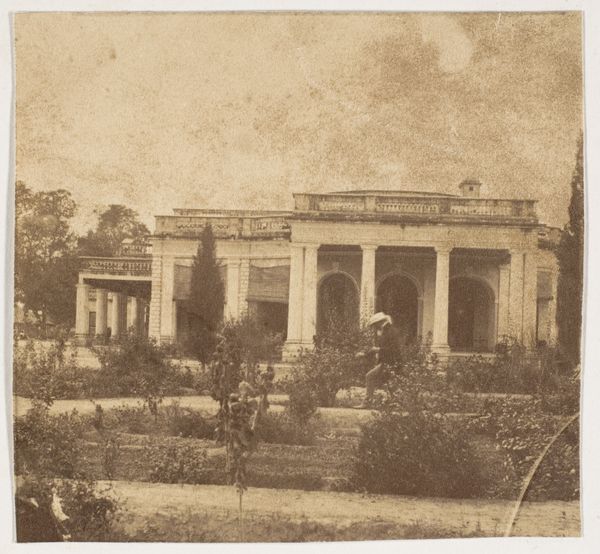
photography
#
dutch-golden-age
#
asian-art
#
nature photography
#
landscape
#
nature
#
photography
#
monochrome photography
#
cityscape
#
monochrome
Dimensions: height 174 mm, width 237 mm
Copyright: Rijks Museum: Open Domain
Editor: Here we have "Societeit de Harmonie in Jakarta," a photograph taken sometime between 1900 and 1915. It’s a monochromatic image of a building by a body of water, and the overall impression is one of a kind of serene formality. What strikes you about this piece? Curator: This photograph offers a powerful glimpse into the complexities of colonial spaces. The "Harmonie" building, likely a social club, represents the transplanted cultural values of the colonizers, doesn't it? But consider its location in Jakarta, then known as Batavia. What do you make of that juxtaposition? Editor: I see what you mean. There's this clear imposing structure that screams European influence, right in the middle of… well, Jakarta. It’s like a statement of power, almost? Curator: Exactly! And we have to ask, who was this “harmonie” really for? Was it truly harmonious, or was it exclusive, reflecting the racial and social hierarchies of the time? This wasn't just a building; it was a stage for enacting colonial power dynamics. Editor: So the photograph isn’t just a cityscape, but a record of social and political structures at play. I hadn't thought about it that way. Curator: Precisely. The presence of water also intrigues me. Do you think it acts as a reflecting pool, emphasizing the grandeur? Or perhaps a symbolic divide? These colonial societies created these types of divisions, as the local population likely wouldn’t participate in these settings. What else do you see here? Editor: I think the division is key here because there aren't any Indigenous people present; that's a statement in itself. It highlights the segregation inherent in colonial rule. I guess it challenges that harmony—maybe what the title says isn't actually there. Curator: Exactly! By questioning these seemingly simple depictions, we uncover the complex realities of colonialism and its impact on identity and society. It serves as a powerful reminder of the need to critically examine history and its ongoing legacy. Editor: Thanks, I feel I’ve gained a completely new lens for approaching historical photography. Curator: My pleasure. I think I see a lot better the nuances of the time after talking to you, also.
Comments
No comments
Be the first to comment and join the conversation on the ultimate creative platform.
